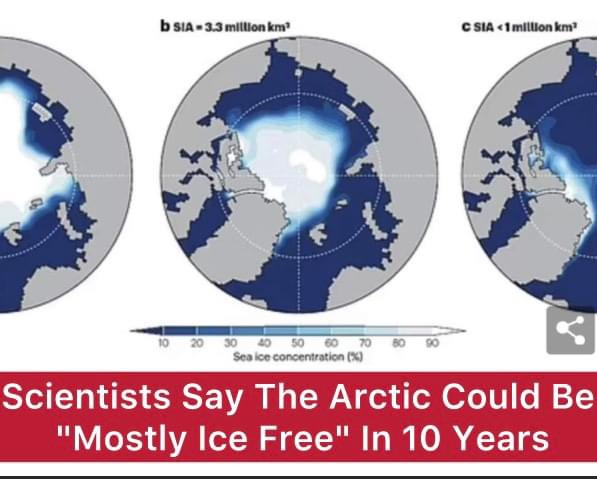The Arctic saw its sixth-lowest minimum ice extent since NASA began satellite tracking on September 19, 2023. At the other pole, the Antarctic saw its lowest maximum ice coverage ever recorded at the same time. Although not new, this worrying pattern seems to be becoming worse.
The amount of Arctic sea ice has been continuously declining since NASA started satellite monitoring in 1978. Recent study indicates that there’s a good chance the Arctic will see September without ice by the 2020s or 2030s. But “ice-free” only means there is fewer than a million square kilometers of covered ice, not total absence. Arctic sea ice covered 1.63 million square miles, or 4.23 million square kilometers, even during the minimum of 2023. Forecasts indicate that by the 2030s, the Arctic’s summer ice
Scientists predict that by 2067, there will be regular ice-free weather in the Arctic, not just in September but also in August and October. However, reducing greenhouse gas emissions may cause this achievement to be delayed. The melting of Arctic ice is highly sensitive to changes in carbon emissions, which suggests that reducing emissions may prevent extended periods without ice.
The study highlights how these changes have a transformative effect and was published in Nature Reviews Earth & Environment. The study’s lead author, Alexandra Jahn, an associate professor of atmospheric and oceanic sciences at the Institute of Arctic and Alpine Research at CU Boulder, emphasizes the critical nature of emission reduction initiatives, noting that even in situations where ice-free conditions are unavoidable, emissions must be kept to a minimum in order to prevent protracted ice-free periods.
These estimates come from thorough evaluations that incorporate different study findings instead of depending only on one data source. They foretell grave repercussions, especially for species that depends on sea ice for survival. Due to the loss of their habitat, polar bears, who depend on sea ice for hunting, are facing more and more difficulties. As Arctic ice recedes, vessels can navigate the area more easily, which might be advantageous for local businesses.
Many businesses, especially from China, have been drawn to operate in Russian-controlled Arctic territory by the region’s growing accessibility.
